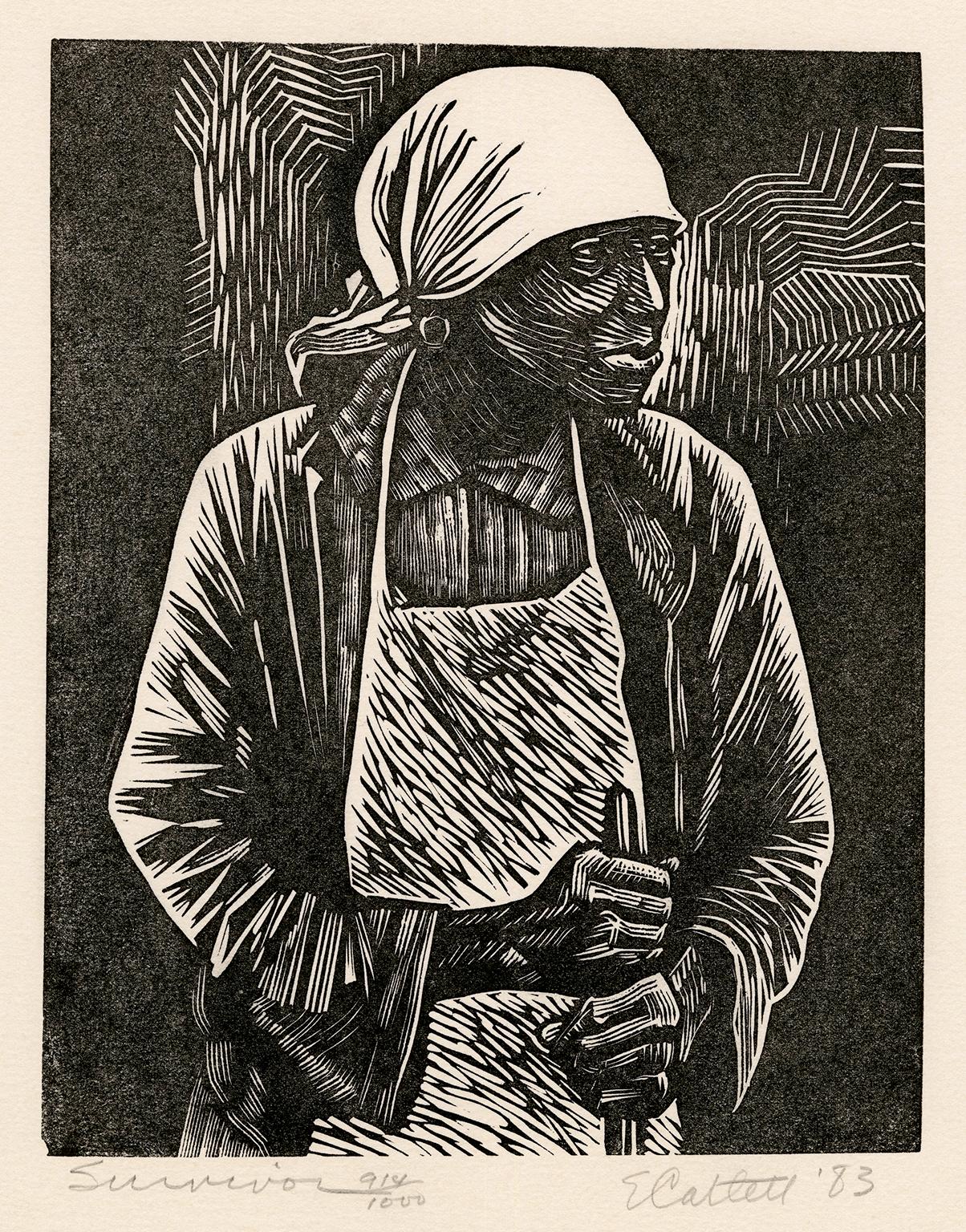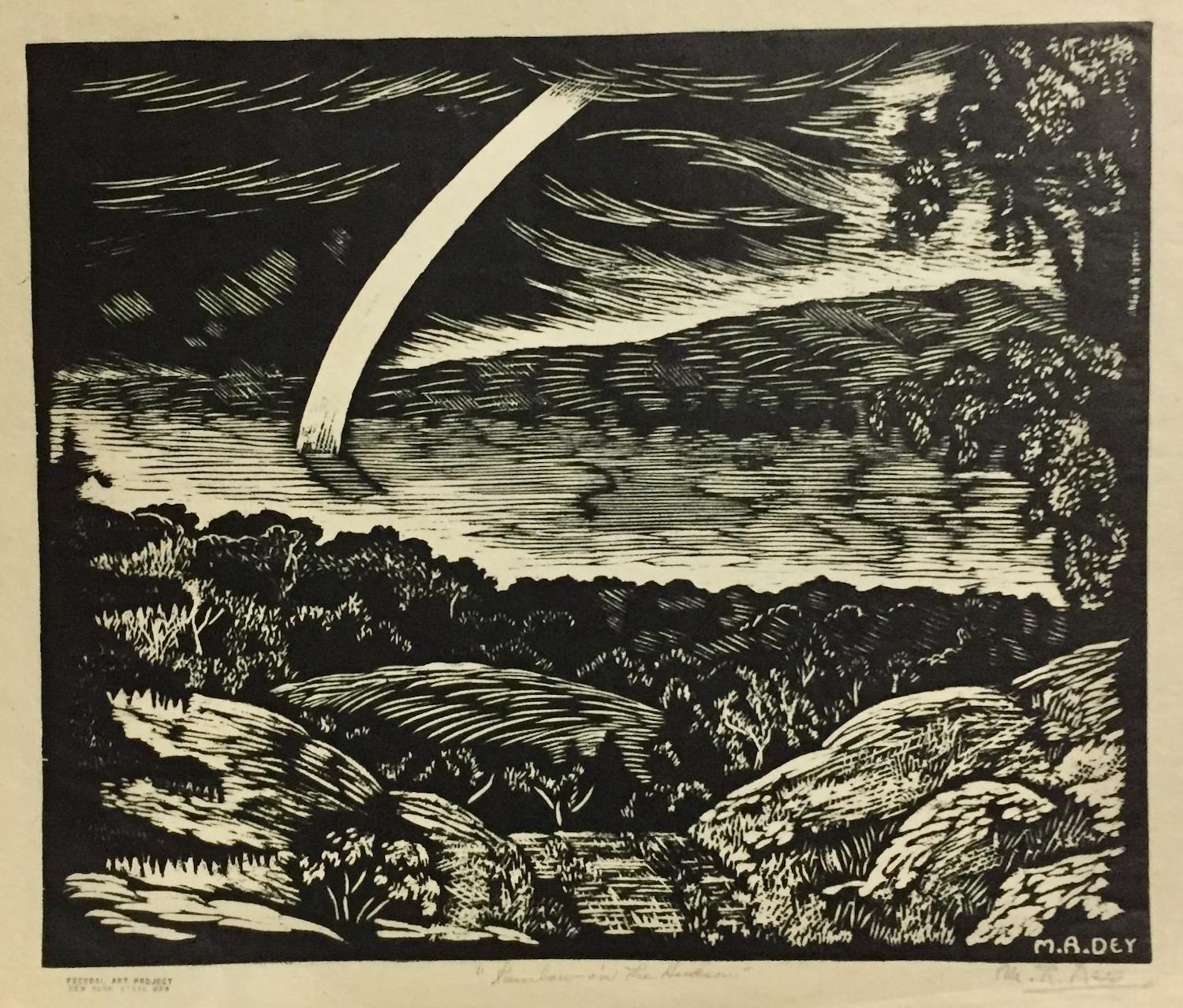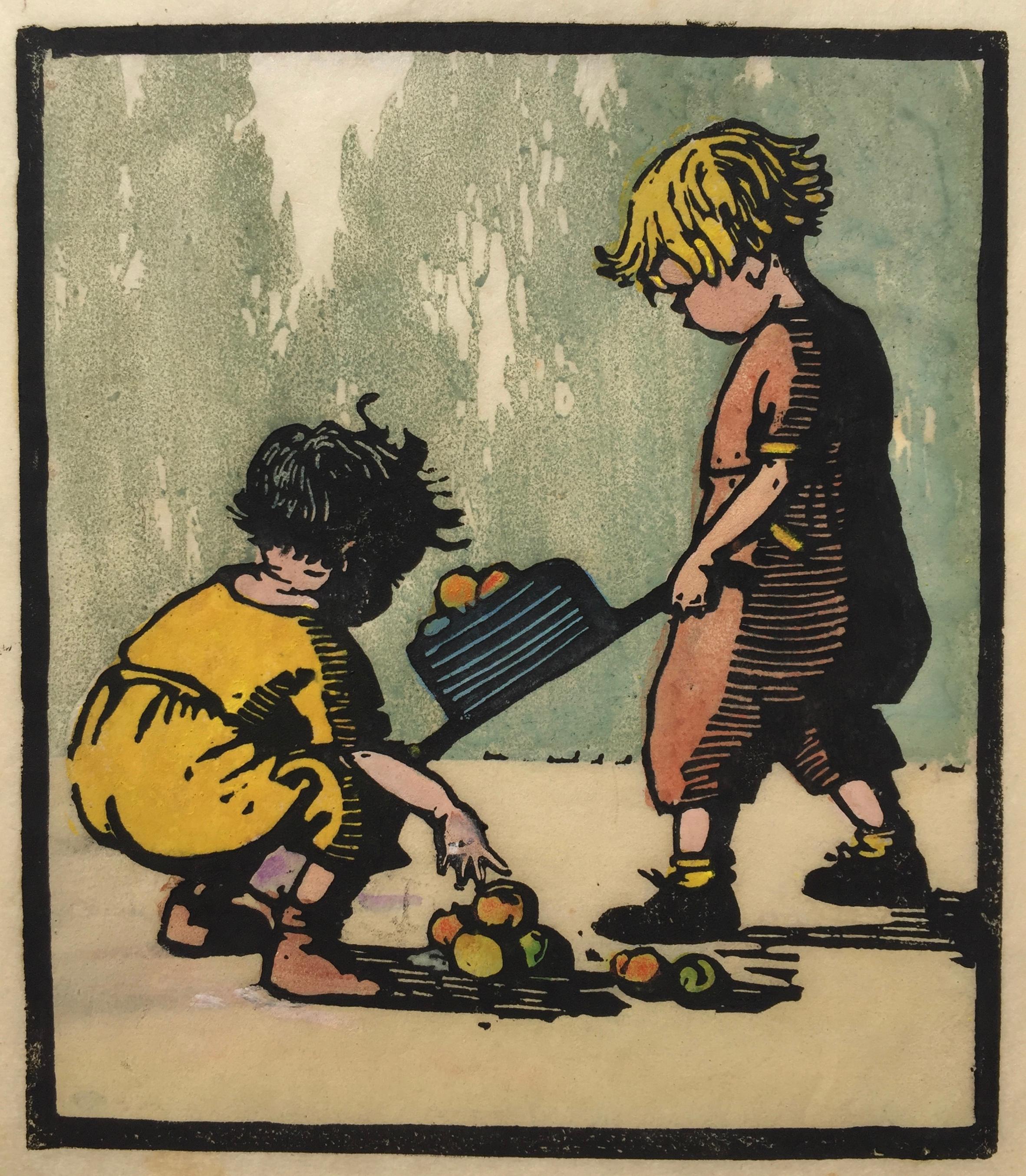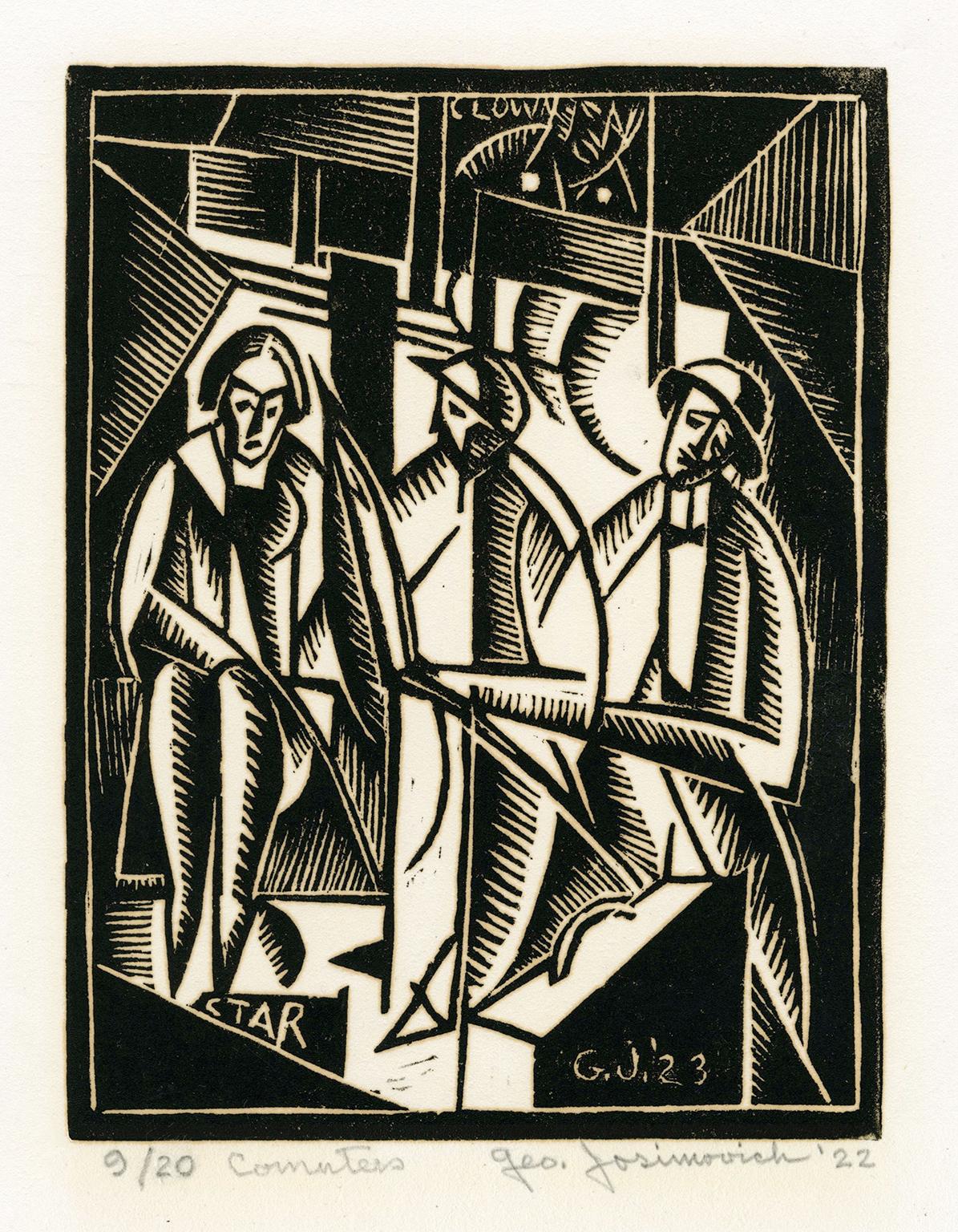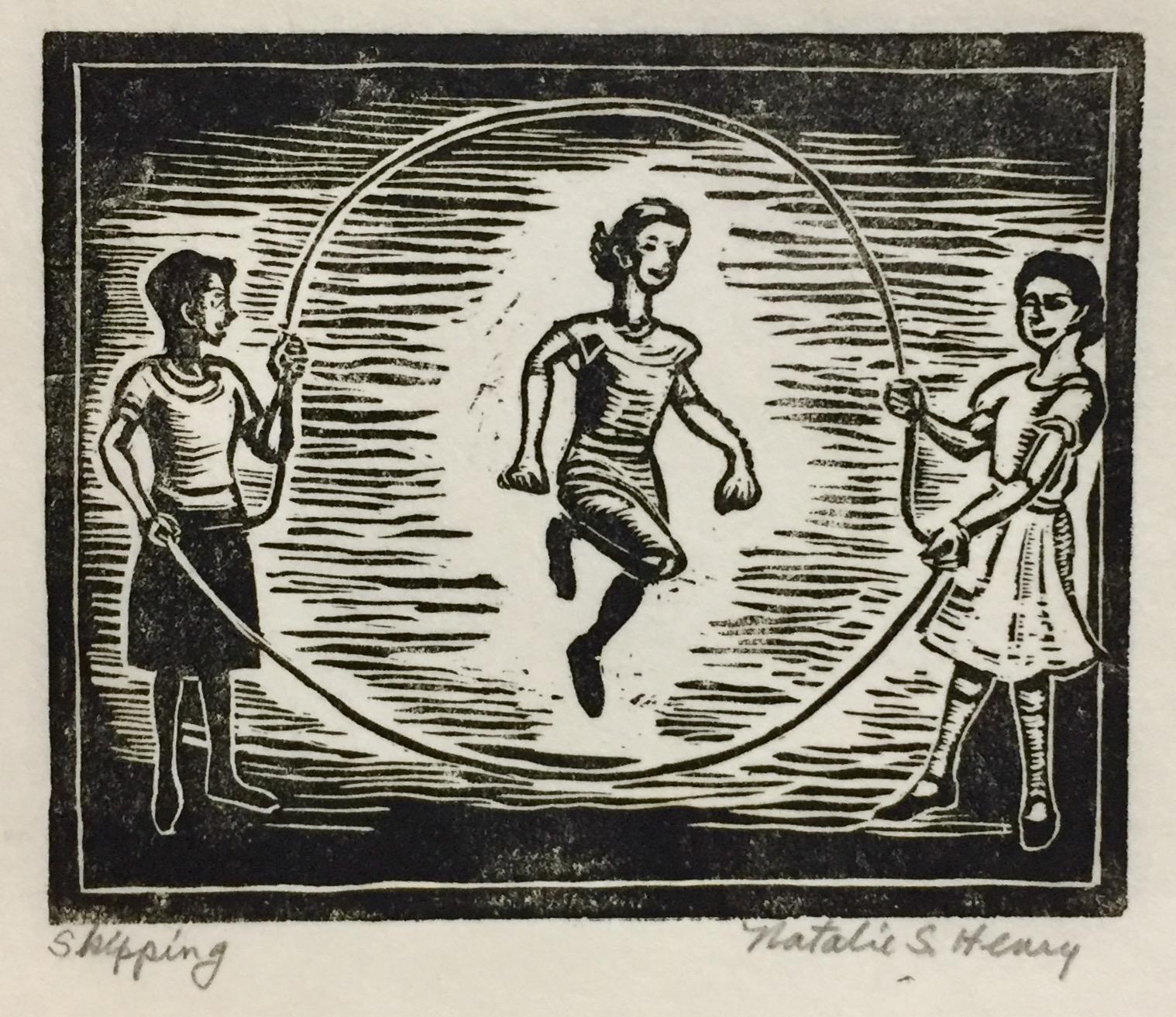Items Similar to Harbor with Sailboats — Early 20th-Century Modernism
Want more images or videos?
Request additional images or videos from the seller
1 of 3
George JosimovichHarbor with Sailboats — Early 20th-Century Modernism1923
1923
About the Item
George Josimovich, Untitled (Harbor with Sailboats) ', linocut, 1923, edition 35. Signed, dated, and annotated '4/35' in pencil. Initialed 'G J' in the matrix, lower left. A fine, richly-inked impression, on cream wove Japan paper, with full margins (7/8 to 2 3/4 inches), in excellent condition. Scarce. Image size 9 x 8 inches (225 x 203 mm); sheet size 14 1/2 x 10 3/4 inches (368 x 273 mm). Matted to museum standards, unframed.
“Life is in a constant state of flux-never-ceasing motion. Everything breathes, moves, vibrates. And it is my ardent belief that the same should be true in a work of art. It should be alive, dynamically alive. Every part of it should live and every part of it should contribute life to the creation as a whole. ...anyone who is sensitive and creative enough to deserve to be called an artist will consciously or unconsciously react to...those phases of life with which his particular nature and personality have a special kinship. And all this cannot help but leave an impress upon his work which is and must be, if it is sincere, an objective manifestation of his inner self.” —George Josimovich, Illinois Historical Art Project
ABOUT THE ARTIST
Born in Mitrovica, Yugoslavia (present-day Serbia), George Josimovich (1894 - 1986) immigrated to the United States with his parents and three younger brothers in 1908. The family settled in Fort Laramie and Cheyenne, Wyoming, along the Union Pacific Railroad, where his father worked as a tailor. In 1914, motivated by a newspaper advertisement for the Lockwood Art School in Kalamazoo, Michigan, Josimovich set out for the Midwest to pursue a career in art.
From 1914–19 he studied at the School of the Art Institute of Chicago (SAIC) under Karl Buehr and Randall Davey, and alongside fellow students William Schwartz, Emil Armin, and Archibald J. Motley Jr. During his final year at SAIC, Josimovich enrolled in a life class with visiting professor George Bellows, whose teachings about avant-garde art, geometric composition, color theory, and individualism in art exerted a profound influence. An exhibition of applied arts by German artist Hermann Sachs at the Art Institute of Chicago during the winter of 1920–21 also made a strong impression on the young artist. Josimovich studied under Sachs at Chicago’s Hull House and, along with other former SAIC students, followed Sachs to the Dayton Art Museum in Ohio to establish an expressionist craft program.
Josimovich returned to Chicago in 1922, where he joined the Jackson Park art colony and spent the next four years honing his craft and developing theories on composition and form. His works from this period evince a lively experimentation with modernist principles and techniques in oil and watercolor paintings, prints, and drawings. Familiar genres of figure study, still life, and landscape are distilled into abstract arrangements of fragmented forms in radically flattened pictorial space, often within tightly ordered geometric compositions. Throughout the 1920s Josimovich established himself as a leading contemporary artist in the city, exhibiting with the Chicago No-Jury Society of Artists, The Ten, and the Chicago Society of Artists, where he later served as president. Critics lauded him as quintessentially modern, praising his “rigid intellectualism” and his focus on color, form, and movement. Josimovich’s year in Paris in 1926–27, where he encountered other practitioners of abstraction and the theory of purism, further stimulated his modernist approach to art. His French sojourn culminated in a 1927 solo exhibition at the Galerie d’art contemporain in Paris, which garnered much coverage in the press.
In the 1930s, Josimovich dramatically transformed his art and became an expressionist in the vein of French painter Chaim Soutine. Soutine, who had emigrated to Paris in 1913 from Belarus, rose to international prominence through a major show at the gallery of Paul Guillaume in 1923 and subsequent purchases of his work by American collector Albert Barnes. Josimovich’s portraits, still lifes, and landscapes from this period bear some of the hallmarks of Soutine’s work in their exaggerated figures, quivering masses of color, and dynamic brushstrokes, and as a result, sparked strongly divided commentary among Chicago critics.
In the early 1930s, Josimovich was one of the organizers of the Fifty-seventh Street Art Colony, a group of artists with modernist sympathies, and worked briefly for the artists’ relief program of the Works Progress Administration. He continued to show his work through the 1950s in numerous group exhibitions at the Art Institute of Chicago, with the No-Jury Society of Artists and the Chicago Society of Artists, and in a solo exhibition at Knoedler’s Chicago gallery in 1932.
—edited from an essay by Patricia Smith Scanlan for ‘Modernism in the New City, Chicago Artists, 1920-1950’
- Creator:George Josimovich (1894 - 1986)
- Creation Year:1923
- Dimensions:Height: 9 in (22.86 cm)Width: 8 in (20.32 cm)
- Medium:
- Movement & Style:
- Period:
- Condition:
- Gallery Location:Myrtle Beach, SC
- Reference Number:
About the Seller
5.0
Recognized Seller
These prestigious sellers are industry leaders and represent the highest echelon for item quality and design.
Platinum Seller
These expertly vetted sellers are 1stDibs' most experienced sellers and are rated highest by our customers.
Established in 1995
1stDibs seller since 2016
259 sales on 1stDibs
Typical response time: 1 hour
Associations
International Fine Print Dealers Association
- ShippingRetrieving quote...Ships From: Myrtle Beach, SC
- Return PolicyA return for this item may be initiated within 7 days of delivery.
More From This SellerView All
- 'Survivor' — Elizabeth CatlettBy Elizabeth CatlettLocated in Myrtle Beach, SCElizabeth Catlett, 'Survivor', linocut, 1983, edition 1000. Signed, titled, dated, and numbered '914/1000' in pencil. A fine impression, on...Category
1980s American Modern Figurative Prints
MaterialsLinocut
- 'Commuters' — Early 20th-Century ModernismBy George JosimovichLocated in Myrtle Beach, SCGeorge Josimovich, 'Commuters', linocut, 1922-23, edition 20. Signed, dated '22, titled, and annotated '9/20' in pencil. Initialed in the block 'G.J....Category
1920s American Modern Figurative Prints
MaterialsLinocut
- 'Havoc in Heaven' — Mid-Century ModernismBy Benton Murdoch SpruanceLocated in Myrtle Beach, SCBenton Spruance, 'Havoc in Heaven', lithograph, 1948, edition 30-35, Fine and Looney 270. Signed, titled, and numbered 'Ed 35' in pencil. Initialed in the stone, lower right. Printed...Category
1940s American Modern Figurative Prints
MaterialsLithograph
- 'City Lights' — Vintage Wood Engraving, New York City, 1934By Fritz EichenbergLocated in Myrtle Beach, SCFritz Eichenberg, 'City LIghts', wood engraving, 1934, edition 200. Signed, titled 'Lights', and annotated 'No 2/200 for Howard M. Chapin' in pencil. Initialed in the block, lower right. A fine, richly-inked black impression, on cream wove paper, with full margins (1 1/4 to 1 7/8 inches); a small loss (5/8 inch) in the top right sheet corner, well away from the image, otherwise in excellent condition. Printed by master printer Ernest Roth...Category
1930s American Modern Figurative Prints
MaterialsWoodcut
- 'Cargo Carriers' — 1930s New York HarborBy Otto KuhlerLocated in Myrtle Beach, SCOtto Kuhler, 'Cargo Carriers', etching and drypoint, c. 1932, edition 10, Kennedy 44. Signed in pencil. A superb, atmospheric impression with rich burr and selectively wiped overall plate tone, in dark brown ink, on Arches cream laid paper; wide margins (2 to 2 3/4 inches), in very good condition. Printed by the artist. Original Kennedy Galleries mat and label. Scarce. "On my trips up and down N.Y. harbor on the Weehawken Ferry, the late evening sun playing on the side of the big liners has always intrigued me... The liner shown I believe to be the Vaterland of the North German Lloyd...Category
1930s American Modern Figurative Prints
MaterialsEtching, Drypoint
- 'The Lamentation' — Mid-century ModernismBy Benton Murdoch SpruanceLocated in Myrtle Beach, SC'The Lamentation', lithograph, 1941, edition 35, Fine and Looney 198. Signed, titled, and annotated 'Ed 35' in pencil. Initialed in the stone, lower ri...Category
1940s American Modern Figurative Prints
MaterialsLithograph
You May Also Like
- Maurice Robert Dey, Rainbow on the HudsonLocated in New York, NYBiographical information on Maurice Robert Dey is hard to find. He was born on 1899 (or maybe 1900), in Switzerland. As an adult he lived and worked in Woodstock, the NY artists' c...Category
1930s American Modern Landscape Prints
MaterialsLinocut
- "Fifty Years Later" - Linocut Print on Paper 1/10Located in Soquel, CA"Fifty Years Later" - Linocut Print on Paper 1/10 A silhouetted image of a person's profile dropping their ballot into a voting box. The simple shapes, t...Category
21st Century and Contemporary American Modern Figurative Prints
MaterialsLinocut, Paper
- FRUIT FOR SALEBy Frances H. GearhartLocated in Santa Monica, CAFRANCES H. GEARHART and Sisters (THE GEARHARTS) FRUIT FOR SALE c.1928 Color block print. Unsigned. This is an original block print from “Let’s Play”, an intended but unpublished children’s book done in collaboration with her sisters Edna and May in 1928. Image 8 x 7 inches. On a tissue thin laid paper. Irregular sheet 9 3/8 x 8 1/2. The entire series consisted of over 20 children's images. There were very few printed. The editions of the various children varied but likely no more than 50. This impression very well printed with good colors, Very good condition. The margins are likely as issued with the irregular edges. The margins and paper used for this series varies from one print to the next. A bit of tape remnants at top center sheet edge. A very nice example of this print. It is not unusual for impressions of this series to be unsigned, although many are signed "The Gearharts" The Provenance of this example is fascinating. It was acquired from a gentleman who knew the Gearharts as a child in the early 50's in Pasadena. It was part of a collection given to him by Frances. In his adult years he was in the military and took the collection with him as he traveled around Europe, After 81 years, based on the original prints, this book was published by the “California Book...Category
1920s American Modern Figurative Prints
MaterialsWoodcut, Linocut
- Natalie S. Henry, Skipping (Children Skipping Rope)Located in New York, NYSigned and titled in pencil. Henry is known for her images of children and her Chicago environment. She frequently showed with the Chicago Society of Artists.Category
1920s American Modern Figurative Prints
MaterialsLinocut
- Harold E. Keeler, Water FallLocated in New York, NYHarold E. Keeler worked in Hollywood as a set designer. That seems especially important here because the Water Fall looks a little as though it could be a woodland stage set -- to me...Category
1930s American Modern Landscape Prints
MaterialsLinocut
- ManBy Elizabeth CatlettLocated in Missouri, MOElizabeth Catlett “Man” 1975 (The Print Club of Cleveland Publication Number 83, 2005) Woodcut and Color Linocut Printed in 2003 at JK Fine Art Editions Co., Union City, New Jersey Signed and Dated By The Artist Lower Right Titled Lower Left Ed. of 250 Image Size: approx 18 x 12 inches Elizabeth Catlett (1915-2012) is regarded as one of the most important women artists and African American artists of our time. She believed art could affect social change and that she should be an agent for that change: “I have always wanted my art to service black people—to reflect us, to relate to us, to stimulate us, to make us aware of our potential.” As an artist and an activist, Catlett highlighted the dignity and courage of motherhood, poverty, and the working class, returning again and again to the subject she understood best—African American women. The work below, entitled, “Man”, is "carved from a block of wood, chiseled like a relief. Catlett, a sculptor as well as a printmaker, carves figures out of wood, and so is extremely familiar with this material. For ‘Man’ she exploits the grain of the wood, allowing to to describe the texture of the skin and form vertical striations, almost scarring the image. Below this intense, three-dimensional visage parades seven boys, printed repetitively from a single linoleum block in a “rainbow roll” that changes from gold to brown. This row of brightly colored figures with bare feet, flat like a string of paper dolls, raise their arms toward the powerful depiction of the troubled man above.” Biography: Elizabeth Catlett (1915-2012) Known for abstract sculpture in bronze and marble as well as prints and paintings, particularly depicting the female figure, Elizabeth Catlett is unique for distilling African American, Native American, and Mexican art in her work. She is "considered by many to be the greatest American black sculptor". . .(Rubinstein 320) Catlett was born in Washington D.C. and later became a Mexican citizen, residing in Cuernavaca Morelos, Mexico. She spent the last 35 years of her life in Mexico. Her father, a math teacher at Tuskegee Institute in Alabama, died before she was born, but the family, including her working mother, lived in the relatively commodious home of his family in DC. Catlett received a Bachelor of Arts degree from Howard University, where there was much discussion about whether or not black artists should depict their own heritage or embrace European modernism. She earned a Master of Fine Arts degree in 1940 from the University of Iowa, where she had gone to study with Grant Wood, Regionalist* painter. His teaching dictum was "paint what you know best," and this advice set her on the path of dealing with her own background. She credits Wood with excellent teaching and deep concern for his students, but she had a problem during that time of taking classes from him because black students were not allowed housing in the University's dormitories. Following graduation in 1940, she became Chair of the Art Department at Dillard University in New Orleans. There she successfully lobbied for life classes with nude models, and gained museum admission to black students at a local museum that to that point, had banned their entrance. That same year, her painting Mother and Child, depicting African-American figures won her much recognition. From 1944 to 1946, she taught at the George Washington Carver School, an alternative community school in Harlem that provided instruction for working men and women of the city. From her experiences with these people, she did a series of paintings, prints, and sculptures with the theme "I Am a Negro Woman." In 1946, she received a Rosenwald Fellowship*, and she and her artist husband, Charles White, traveled to Mexico where she became interested in the Mexican working classes. In 1947, she settled permanently in Mexico where she, divorced from White, married artist Francisco Mora...Category
Late 19th Century American Modern Figurative Prints
MaterialsWoodcut, Linocut
Recently Viewed
View AllMore Ways To Browse
1930s Modernism
Antique Sailboats
1920 Program
George Bellows Artists
Chicago Railroad
Antique Railroad Signs
Sailboat Set
Oil Painting Serbia
Antique Japanese Divider
Antique French Abstract Oil
Antique Ohio State
Hallmark Jr
J Schwartz
Union Pacific Railroad
Archibald Motley
Dayton Railroad
Ink Drawings If Paris City Streets
Vintage Foster Grants
